2021
Type of resources
Available actions
Topics
Keywords
Contact for the resource
Provided by
Years
Formats
Representation types
Update frequencies
Service types
Resolution
-
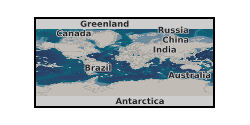
The VOLCORE (Volcanic Core Records) database is a collection of 34,696 visible tephra (volcanic ash and lithological or grain size variations) occurrences reported in the initial reports volumes of all of the Deep Sea Drilling Project (DSDP; 1966–1983), the Ocean Drilling Program (ODP; 1983–2003), the Integrated Ocean Drilling Program (IODP; 2003–2013) and the International Ocean Discovery Program (IODP; 2013-present) up to and including IODP Expedition 381. The combined international ocean drilling programmes (OD) have locations with global coverage. Cored tephra layers and tephra-bearing sediments span timescales from recent to ~150 million years in age. This database is a collection of information about reported visible tephra layers entirely or predominantly composed of volcanic ash. Data include the depth below sea floor, tephra thickness, location, and any reported comments. An approximate age was estimated for most (29,493) of the tephra layers using published age-depth models. The database can be used as a starting point for studies of tephrochronology, volcanology, geochemistry, studies of sediment transport and palaeoclimatology.
-
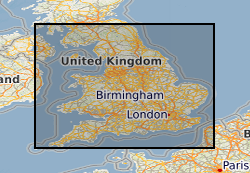
The property subsidence assessment dataset provides an understanding of the shrink-swell hazard at both the individual property and/or postcode level for England and Wales. It builds upon the BGS GeoSure shrink-swell data by mapping the hazard to the individual building polygon and considering the other susceptibility factors of building type, foundation depth, and drainage and tree proximity. The data consist of GIS building polygons with an overall susceptibility to subsidence score between 1-100. Scores are also classified from non-plastic to very high. Each building polygon is also scored from 1-10 for each subsidence factor (geology, foundation, drainage, building type, building storey and tree proximity). Postcode data is also available as a table showing the ‘average’ PSA score for all buildings within the postcode. The identification of shrink-swell related subsidence prone areas, alongside the inclusion of potential sources to exacerbate these phenomena, can better inform insurers and homeowners and form the basis to make decisions concerning prevention and remediation. The product enhances geological information obtained from GIP (BGS GeoSure Insurance Product) and GeoSure via the inclusion of the crucial shrink-swell susceptibility factors (proximity to trees and foundation depth). This therefore allows the derivation of a risk element for the housing stock at Building level, which is then generalised to Postcode level. BGS GeoSure - a series of GIS digital maps identifying areas of potential natural ground movement hazard in Great Britain
-
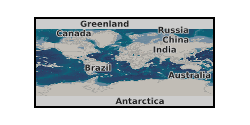
2020 data consists of high frequency (100 Hz) data from two horizontal induction coils measuring the Earth's magnetic field at the Eskdalemuir Observatory in the United Kingdom (Location in Geographic Coordinates: 55.314° N 356.794° E and Elevation: 245m above mean sea level).
-
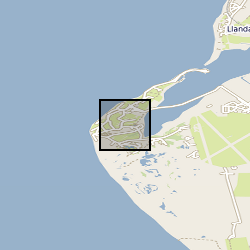
X-ray computed tomography (XCT) scans of four samples of consolidated shale from the Lower Jurassic (C.exaratum subzone) of the Cardigan Bay Basin (Wales, UK). The samples were taken from the Mochras Core, at depths of 789, 810, 812, and 818m (all samples within data measured in metres). Each sample is distinguished by its unique sample identification number (SSK). For each sample, there is a stack of XCT orthoslices (.tiff) files, and for SSK109633, an incomplete Avizo file. Mochras core location (aprox.) 52°48'39.74"N, 4° 8'48.09"W. Mochras Island, west of Llanbedr, Gwynedd, Wales, UK
-
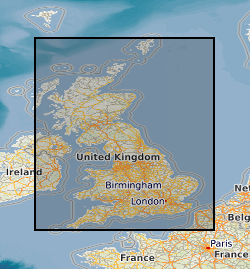
Radon is a natural radioactive gas, which enters buildings from the ground. The joint UK Health Security Agency (UKHSA) (formerly Public Health England (PHE) ) - British Geological Survey (BGS) digital Indicative Atlas of radon in Great Britain presents an overview of the results of detailed mapping of radon potential, defined as the estimated percentage of homes in an area above the radon Action Level. Exposure to high concentrations increases the risk of lung cancer. UKHSA (formerly PHE) recommends that radon levels should be reduced in homes where the annual average is at or above 200 becquerels per cubic metre (200 Bq m-3). This is termed the Action Level. UK Health Security Agency defines radon Affected Areas as those with 1% chance or more of a house having a radon concentration at or above the Action Level of 200 Bq m-3. The Indicative Atlas of radon in Great Britain presents a simplified version of the radon potential for Great Britain with each 1-km grid square being classed according to the highest radon potential found within it, so is indicative rather than definitive. The joint UKHSA-BGS digital radon potential for Great Britain provides the current definitive map of radon Affected Areas in Great Britain.
-
The World Climate Research Program (WCRP) Coupled Model Intercomparison Project, Phase 6 (CMIP6) data from the Commonwealth Scientific and Industrial Research Organisation (CSIRO) ACCESS-ESM1-5 model output for the "effective radiative forcing by present-day aerosols" (piClim-aer) experiment. These are available at the following frequencies: AERmon, Amon and fx. The runs included the ensemble member: r1i1p1f1. CMIP6 was a global climate model intercomparison project, coordinated by PCMDI (Program For Climate Model Diagnosis and Intercomparison) on behalf of the WCRP and provided input for the Intergovernmental Panel on Climate Change (IPCC) 6th Assessment Report (AR6). The official CMIP6 Citation, and its associated DOI, is provided as an online resource linked to this record.
-
The World Climate Research Program (WCRP) Coupled Model Intercomparison Project, Phase 6 (CMIP6) data from the Met Office Hadley Centre (MOHC) UKESM1-0-LL model output for the "2-year Covid-19 emissions blip followed by moderate-green stimulus recovery, based upon ssp245" (ssp245-cov-modgreen) experiment. These are available at the following frequencies: AERmon, Amon, Emon, Lmon, Omon, SImon and day. The runs included the ensemble members: r10i1p1f2, r11i1p1f2, r12i1p1f2, r16i1p1f2, r17i1p1f2, r18i1p1f2, r19i1p1f2, r1i1p1f2, r2i1p1f2, r3i1p1f2, r4i1p1f2, r6i1p1f2, r7i1p1f2, r8i1p1f2 and r9i1p1f2. CMIP6 was a global climate model intercomparison project, coordinated by PCMDI (Program For Climate Model Diagnosis and Intercomparison) on behalf of the WCRP and provided input for the Intergovernmental Panel on Climate Change (IPCC) 6th Assessment Report (AR6). The official CMIP6 Citation, and its associated DOI, is provided as an online resource linked to this record.
-
Daily concatenated files of ceilometer cloud base height and aerosol profile data from Met Office's Vaisala CL31 deployed at Boscombe Down, Uk. These data were produced by the EUMETNET's E-PROFILE processing hub as part of the ceilometer and lidar network operated as part of the by EUMETNET members. This network covers most of Europe with additional sites worldwide. The site has a corresponding WMO Integrated Global Observing System (WIGOS) id: 0-20000-0-03746. See online documentation for link to station details in the Observing Systems Capability Analysis and Review (OSCAR) Tool. EUMETNET is a grouping of 31 European National Meteorological Services that provides a framework to organise co-operative programmes between its Members in the various fields of basic meteorological activities. One such programme is the EUMETNET Profiling Programme: E-PROFILE. See EUMETNET page linked from this record for further details of EUMETNET's activities.
-
The World Climate Research Program (WCRP) Coupled Model Intercomparison Project, Phase 6 (CMIP6) data from the Centro Euro-Mediterraneo per I Cambiamenti Climatici (CMCC) CMCC-CM2-HR4 model output for the "abrupt quadrupling of CO2" (abrupt-4xCO2) experiment. These are available at the following frequencies: Amon, CFday, Oday, Ofx, Omon, day and fx. The runs included the ensemble member: r1i1p1f1. CMIP6 was a global climate model intercomparison project, coordinated by PCMDI (Program For Climate Model Diagnosis and Intercomparison) on behalf of the WCRP and provided input for the Intergovernmental Panel on Climate Change (IPCC) 6th Assessment Report (AR6). The official CMIP6 Citation, and its associated DOI, is provided as an online resource linked to this record.
-
This dataset contains high-resolution (5 km) Standardized Precipitation Evaporation Index (SPEI-HR) drought data for Central Asia. There are forty-eight different SPEI time scales and the available period is from 1981 - 2018, the data was produced using Climate Hazards group InfraRed Precipitation with Station’s (CHIRPS) precipitation dataset and Global Land Evaporation Amsterdam Model’s (GLEAM) potential evaporation dataset. The SPEI-HR dataset, over time and space, correlates fairly well with SPEI values estimated from coarse-resolution Climate Research Unit (CRU) dataset. Furthermore, the SPEI-HR dataset, for 6-month timescale, displayed a good correlation of 0.66 with GLEAM root zone soil moisture and a positive correlation of 0.26 with normalized difference vegetation index (NDVI) from Global Inventory Monitoring and Modelling System (GIMMS).
 NERC Data Catalogue Service
NERC Data Catalogue Service